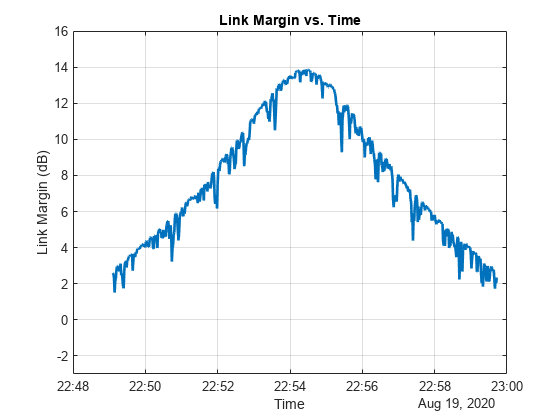ebno
Description
e = ebno(lnk)e of the history of received values for energy per bit to noise
power spectral density (Eb/No) in dB at the final node in each possible multihop link in the
vector lnk. The rows of the matrix correspond to the link object in
lnk and the columns correspond to the time sample.
e = ebno(lnk,timeIn)e in dB at the final node in each link
defined in the vector lnk at the specified datetime
timein. Each element of e corresponds to a link
in lnk. If no time zone is specified in timeIn,
the time zone is assumed to be Coordinated Universal Time(UTC).
Examples
Input Arguments
Output Arguments
Algorithms
The Eb/No in dB is calculated as
EbNo = txPower + txAntennaGain - txSystemLoss - pathloss + rxAntGaintoNoiseTempRatio - 10*log10(K) - rxSystemLoss - 10*log10(bitRate) - 60
where:
txPower is the transmitter power in dBW.
txAntennaGain is the transmitter antenna gain in dB.
txSystemLoss is the transmitter system loss in dB.
pathloss is the path loss in dB.
rxAntGaintoNoiseTempRatio is the receiver antenna gain to noise temperature ratio.
K is the Boltzmann constant.
rxSystemLoss is the receiver system loss in dB.
bitRate is the bit rate in Mbps.
Version History
Introduced in R2021a
